Pallet Inverter: How Can Food & Beverage Plants Quickly Replace Damaged Pallets?
A single damaged pallet can bring your entire shipping operation to a halt. In the fast-paced food and beverage industry, a cracked or broken wooden pallet isn't just an inconvenience; it's a direct threat. It can lead to rejected shipments from major retailers, potential product contamination, and safety risks for your team. I’ve seen warehouses where a single bad pallet forces workers to spend over an hour manually unstacking and restacking an entire load, all while a delivery truck waits and the clock ticks. This manual process is slow, dangerous, and a drain on your resources. But there is a much better way to handle this common problem, a solution that turns an hour-long ordeal into a two-minute task.
A pallet inverter is the most effective solution for food and beverage plants to quickly replace damaged pallets. This machine securely clamps a full load of goods, rotates it 180 degrees, and allows an operator to effortlessly remove the broken pallet from the top. After placing a new pallet on the load, the machine rotates everything back, ready for shipment. The entire process takes less than two minutes, requires minimal labor, and eliminates the risk of product damage or contamination.
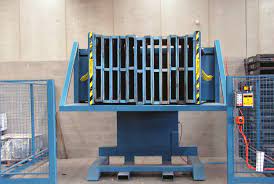
You might be thinking this is a niche issue for food processors or distribution centers. But in my journey from a factory engineer to building my own company, I've learned that the principles of efficiency are universal. A bottleneck is a bottleneck, whether you are handling steel coils or cases of beverages. A smart investment in automation that solves a recurring problem will always deliver a strong return. An executive like Javier Morales, who has built a steel empire by focusing on technical innovation and ROI, would immediately recognize the value here. The logic is the same across industries. Let's explore why the old way of handling pallets is a hidden liability and how a simple machine can be a powerful strategic asset.
Why is Manual Pallet Replacement Inefficient and Risky?
You see a team member spot a broken pallet and you ask them to "just fix it." On the surface, it seems like a straightforward task. But this common practice is a major source of hidden costs and danger in any plant. Every time your staff manually restacks a pallet, you are exposing your business to a host of problems. You risk product being dropped or damaged, you risk contamination from goods touching the floor, and most importantly, you risk the safety of your employees. This unpredictable, time-consuming task disrupts your workflow, causes delays at the loading dock, and ultimately chips away at your plant's efficiency and profitability. By truly understanding the costs and risks involved, you can see why moving to an automated solution is not a luxury, but a necessity.
Manual pallet replacement is inefficient because it is extremely labor-intensive, taking 30 minutes or more to complete a single pallet swap. It is also risky because it exposes employees to ergonomic injuries from repetitive lifting and creates a high probability of product damage or contamination, leading to direct financial losses and potential compliance issues.
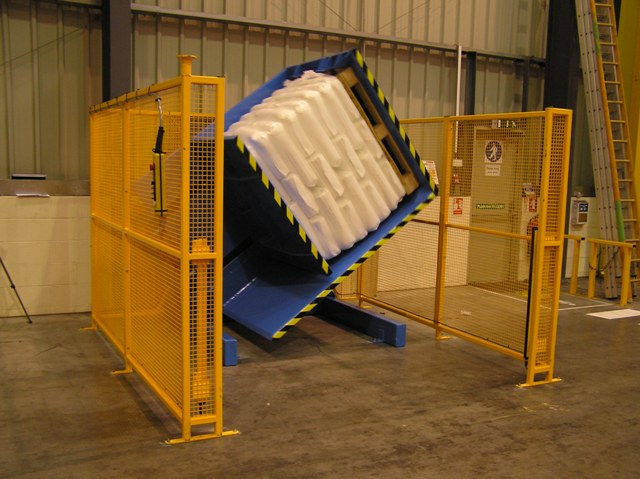
A Deeper Look at the True Costs
When I analyze an operation, I look beyond the obvious. The inefficiency of manual pallet exchange goes much deeper than just the time it takes. It creates a domino effect of costs that are often overlooked until they show up as shrinking profit margins. As an engineer, I like to break down the problem into its core components: financial, safety, and quality. Each one presents a compelling argument for automation.
The Financial Drain of Manual Labor
The most obvious cost is labor. If it takes two employees 30 minutes to restack a pallet, you have paid for one full hour of labor. If this happens multiple times a day, the costs add up quickly. But it's not just about the direct wages. It's about opportunity cost. Those employees could have been picking orders, loading trucks, or performing other value-added tasks. Instead, they are tied up in a low-value, high-risk activity. Then there are the secondary costs: truck detention fees for drivers who have to wait, penalties for missed delivery appointments, and the administrative headache of dealing with customer complaints for late or damaged shipments. These are not just operational issues; they are real dollars coming off your bottom line.
The Unacceptable Burden of Safety Risks
Workplace safety is not just a regulatory requirement; it's a moral and financial responsibility. Manual restacking is one of the most common causes of musculoskeletal injuries in a warehouse. Bending, lifting, and twisting with heavy boxes puts immense strain on an employee's back, shoulders, and knees. A single serious back injury can lead to staggering workers' compensation claims, lost time, and a negative impact on team morale. Beyond strains, there's the acute risk of accidents. A box can slip, a stack can become unstable and topple over, leading to serious injuries. No responsible manager wants to see their team members get hurt performing a task that a machine can do safely in seconds.
The Threat to Product Quality and Compliance
In the food and beverage industry, quality and hygiene are non-negotiable. When a pallet is restacked manually, boxes are often placed directly on the warehouse floor. This is a major red flag for any food safety audit, like those under GMP (Good Manufacturing Practices) or HACCP (Hazard Analysis and Critical Control Points) standards. The floor is a source of contaminants that can easily transfer to the packaging and, potentially, the product. Furthermore, every time a box is handled, there's a chance it will be dropped, dented, or crushed. This leads to unsaleable goods and financial loss.
| Metric | Manual Pallet Replacement | Automated Pallet Inverter |
|---|---|---|
| Time per Pallet | 20-40 minutes | < 2 minutes |
| Labor Required | 1-2+ employees | 1 operator (part-time) |
| Safety Risk | High (ergonomic strain, accidents) | Very Low (operator is clear of load) |
| Product Damage Risk | Moderate to High | Very Low (load is securely clamped) |
| Contamination Risk | High (products may touch floor) | None (load is contained) |
How Does a Pallet Inverter Improve Operational Efficiency?
Your plant is a system, a chain of processes designed to move product from raw material to finished goods as smoothly as possible. But a chain is only as strong as its weakest link. For many, that weak link is the final handling stage, where a simple issue like a damaged pallet can create a major bottleneck. These delays might seem small individually, but they accumulate. They reduce your plant's overall capacity, increase your cost per unit, and limit your ability to respond to fluctuating market demands. A pallet inverter addresses this problem directly. It transforms a slow, manual chokepoint into a fast, predictable, and automated step, which elevates the efficiency of your entire operation.
A pallet inverter boosts operational efficiency by drastically reducing the time needed for a pallet exchange to under two minutes. This rapid cycle time minimizes labor, eliminates bottlenecks at the loading dock, reduces product damage, and ensures a consistent, predictable flow of goods, directly increasing plant throughput and lowering operational costs.
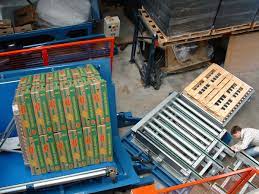
The Mechanics of Gaining Efficiency
From an engineering perspective, the beauty of a pallet inverter lies in its simplicity and effectiveness. It uses mechanical power to do what is difficult and dangerous for a human to do. The goal is to separate the goods from the pallet with minimal handling and maximum speed. This process can be applied not just to damaged pallets, but to a variety of logistical needs, making it a versatile tool.
The Inversion Process: A Simple and Secure Method
The operation of a standard pallet inverter is straightforward. A forklift places the entire palletized load into the machine. The operator then initiates the cycle with a push of a button. Here is what happens next:
- Clamping: Two padded plates gently but firmly secure the load from the top and bottom. The clamping pressure is often adjustable, which is crucial. You need enough force to hold a heavy load of canned goods securely, but you don't want to crush a pallet of delicate pastry boxes.
- Rotation: The machine rotates the entire clamped load, typically 180 degrees. The goods are now upside down, resting securely on what was the top clamping plate. The original, now-damaged pallet is on top, free and clear.
- Exchange: The operator can easily lift off the old pallet. A new pallet (perhaps a higher-quality plastic pallet for a cleanroom environment or a customer's required CHEP pallet) is then placed on top of the inverted load.
- Return: The machine rotates back 180 degrees. The clamping plates release, and the forklift can remove the load, now on a new, secure pallet, ready for shipment.
Quantifying the Impact on Your Plant
For a business leader like Javier Morales, who focuses on hard numbers, the benefits must be quantifiable. The return on investment (ROI) for a pallet inverter is compelling.
- Throughput: A plant that previously took 30 minutes to swap a pallet can now do it in 2. This means you can process 15 times more pallet corrections in the same amount of time. Loading docks are cleared faster, and trucks get on the road sooner. This directly contributes to the goal of increasing capacity utilization.
- Labor Savings: The one or two employees who were busy restacking are now free. They can be redeployed to more productive tasks. This is not about eliminating jobs; it's about making your workforce more effective, which helps lower overall operating costs.
- Damage Reduction: Because the product is never handled manually, the risk of dropping or crushing goods is virtually eliminated. If a plant reduces product damage by even a small percentage, the savings can amount to thousands of dollars per year.
| Task | Manual Method | Pallet Inverter Method |
|---|---|---|
| Load Handling | Manually move every box | Machine clamps the entire load once |
| Worker Safety | High risk of back injury | Operator stands clear of all movement |
| Process Speed | Slow and variable | Fast and consistent (< 2 min) |
| Versatility | Only for pallet exchange | Also for freezer spacer removal, ingredient transfer |
What are the Key Considerations When Choosing a Pallet Inverter?
You have recognized the problem and you see the solution. You are ready to invest in a pallet inverter. Now comes the critical part: choosing the right machine for your specific needs. The market offers a wide range of models, and selecting the wrong one can turn a potential solution into a new set of problems. I have seen clients purchase machines that were too small for their loads or too complex for their staff to operate effectively. An investment like this requires the same careful analysis as any major capital expenditure. A pragmatic, forward-thinking approach is essential to ensure you get a machine that delivers reliability, performance, and a strong return for years to come.
When choosing a pallet inverter, the key considerations are load capacity and dimensions, the type of clamping system, required cycle time, and the available footprint in your facility. You must also evaluate the level of automation and the built-in safety features, such as light curtains or safety cages, to ensure the machine is a perfect fit for your product, process, and people.
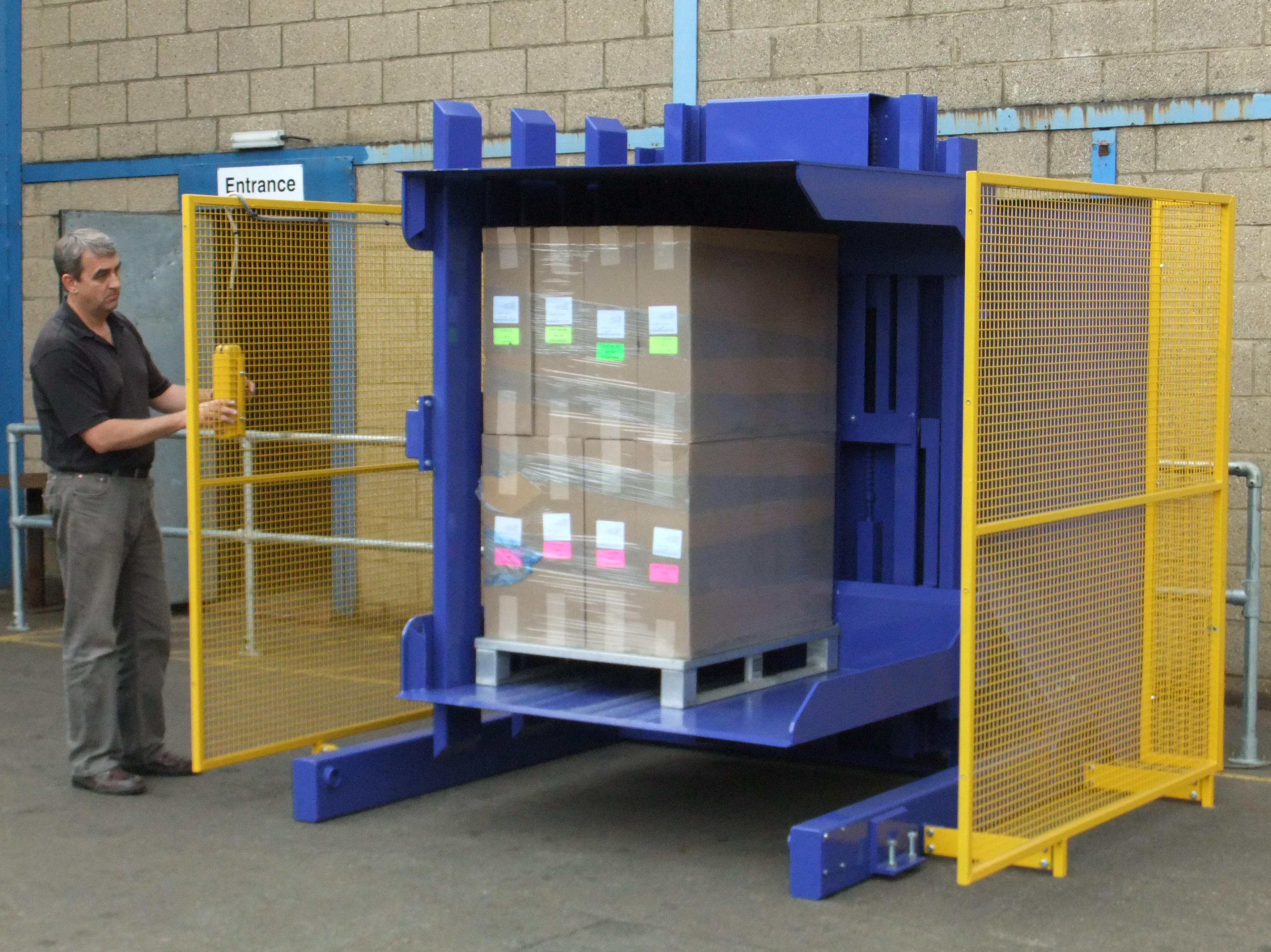
A Practical Checklist for Your Selection Process
As an engineer who has designed and built machinery, I always start with the specifications. You must match the machine's capabilities to the reality of your production floor. Don't rely on a sales brochure alone. Dig into the technical details and think about how the machine will function in your day-to-day operations.
Matching the Machine to Your Load
This is the most fundamental step. If the machine cannot handle your product, nothing else matters.
- Load Capacity: What is the maximum weight of your heaviest pallet? Choose a machine with a capacity at least 20-25% higher than your maximum load to ensure a safety margin and long-term durability.
- Load Dimensions: Measure your tallest, widest, and deepest pallet loads. The machine's opening, or "jaw range," must be able to accommodate your largest load while also being able to clamp your smallest load securely.
- Clamping System: This is critical. Are you handling sturdy, boxed goods or fragile, shrink-wrapped items? A machine with adjustable clamping pressure is essential. Too much pressure will damage product; too little will cause the load to shift during rotation. Ask the supplier to demonstrate how this pressure is controlled.
Evaluating Operational and Safety Features
A machine must be both effective and safe. In today's factories, safety is paramount and non-negotiable.
- Footprint and Layout: Where will the machine go? You need to account for the machine's physical size plus the clearance area required for a forklift to approach, load, and unload safely. Consider the flow of traffic in the area.
- Control System: Do you need a simple, robust push-button control for basic operation, or do you need a more advanced PLC (Programmable Logic Controller) that can be integrated with other systems? For most standalone applications, simple and durable controls are best.
- Safety Guarding: Modern safety standards are strict. The machine must have proper guarding to prevent operators from entering the operational area during a cycle. This typically includes physical fencing combined with safety light curtains or laser scanners that immediately stop the machine if a person or object crosses the beam. Ensure any machine you consider meets local and international safety standards (e.g., ISO, CE).
| Feature to Consider | Question to Ask | Why It Matters |
|---|---|---|
| Capacity (Weight) | What is our heaviest pallet load? | Prevents overloading and premature wear. |
| Jaw Range (Size) | What are our min/max load heights? | Ensures the machine can handle all your products. |
| Clamping Pressure | Can the pressure be adjusted for delicate loads? | Prevents product damage. |
| Cycle Time | How fast must it be to keep up with our line? | Determines throughput and efficiency. |
| Safety System | Does it have certified light curtains and fencing? | Protects your employees from serious injury. |
| Power Source | What are the electrical/hydraulic requirements? | Ensures compatibility with your plant's infrastructure. |
How Can a Pallet Inverter Integrate with Existing Production Lines?
A standalone, forklift-fed pallet inverter is a huge step up from manual handling. But for a truly modern and efficient facility aiming for comprehensive automation, the next question is integration. How do you make this machine a seamless part of your production or packaging line? An isolated "island of automation" can sometimes create new inefficiencies, requiring an operator to transport pallets to and from the machine. This adds manual steps back into the process. The ultimate goal, especially for a leader focused on digital transformation, is to connect these islands. A fully integrated system is what separates a good operation from a great one.
A pallet inverter integrates with existing production lines through the use of powered infeed and outfeed conveyors. These conveyors automatically transport pallets into and out of the inverter, with sensors and a PLC controlling the entire sequence. This creates a fully automated, "hands-off" system that can be linked to a central plant management system (MES) for seamless operation.
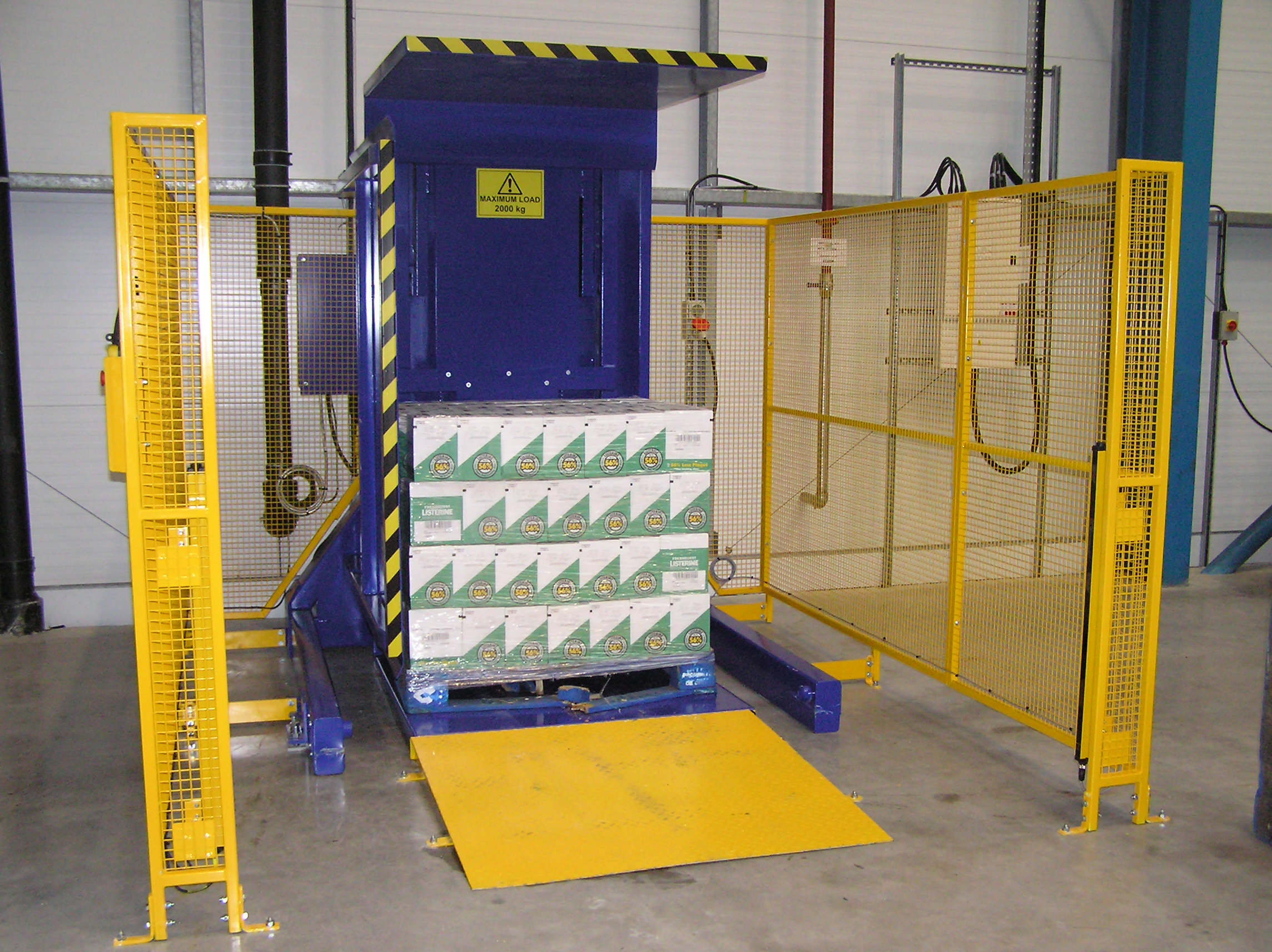
From Standalone Machine to Automated Cell
Thinking about integration requires a shift in perspective. You are no longer just buying a machine; you are designing a process. This is where a partnership with a knowledgeable supplier becomes crucial. They should be able to help you design a solution that fits your long-term goals.
Levels of Integration
Not every application requires full automation. The right level of integration depends on your volume, plant layout, and budget.
- Level 1: Standalone (Forklift-Fed): This is the most common configuration. The inverter is placed in a convenient location, and a forklift operator brings pallets to it as needed. It's flexible, relatively low-cost to install, and ideal for lower-volume applications or when pallet issues are infrequent.
- Level 2: In-Line with Conveyors: This is the first step toward full automation. The pallet inverter is placed directly within a conveyor line. Pallets travel down the line, enter the inverter, are processed, and then exit onto another conveyor to continue to the next stage (e.g., a stretch wrapper or a loading dock). This is perfect for high-volume, dedicated production lines where efficiency is paramount.
- Level 3: Full System Integration (MES/WMS Controlled): This is the pinnacle of smart manufacturing. The conveyor-fed system is connected to your plant’s Manufacturing Execution System (MES) or Warehouse Management System (WMS). For example, a barcode scanner on the line could identify a pallet from a specific supplier that needs to be switched to an in-house pallet. The WMS would automatically route that pallet into the inverter loop, all without human intervention. This is a core component of achieving a goal like 95% production uptime.
The Technical Components of Integration
To make this happen, you need more than just the inverter itself.
- Conveyors: You will need powered roller or chain conveyors to move the heavy pallet loads. The type of conveyor depends on the pallet type and weight.
- Sensors: Photo-eye sensors are used to detect when a pallet has entered the correct position inside the inverter, triggering the machine cycle. Another sensor detects when the pallet has cleared the machine, signaling the conveyor to start again.
- PLC and HMI: The entire automated cell is controlled by a PLC. The PLC coordinates the actions of the conveyors and the inverter. An HMI (Human-Machine Interface) screen provides operators with system status, allows for manual control, and displays any error messages. This controller can then communicate with your higher-level MES.
| Integration Level | Description | Best For | Key Components |
|---|---|---|---|
| Standalone | Forklift loads/unloads machine. | Low volume, high flexibility needs. | Pallet Inverter, Forklift. |
| In-Line | Conveyors feed machine automatically. | High volume, dedicated production lines. | Inverter, Conveyors, Sensors, PLC. |
| Fully Integrated | In-line system connected to plant software. | Smart factories, digital transformation goals. | In-line system + MES/WMS connection. |
My Insights
Throughout my career, from my first days on a factory floor to establishing my own company, SHJLPACK, I’ve learned one crucial lesson: lasting success is built on solving problems systematically. It's not about finding temporary fixes; it's about investing in robust solutions that improve efficiency, safety, and quality all at once. When I look at a machine like a pallet inverter, I don't just see a piece of equipment. I see a strategic tool.
For a leader like Javier Morales, who has navigated the demanding steel industry by embracing innovation, the logic of the pallet inverter is immediately clear, even though the application is in a different sector. His challenges—aging equipment, cost pressures, and the drive for digital transformation—are universal. A pallet inverter is a perfect example of a targeted investment that addresses all three.
It's a modern answer to an old problem, replacing a process that is inefficient and risky. It's a direct assault on hidden operational costs. The return on investment, calculated from saved labor, eliminated product damage, and increased throughput, directly supports a goal of reducing operating costs.
Most importantly, an integrated pallet inverter is a tangible step on the path to digitalization. When you connect it to conveyors and your MES, it stops being just a machine and becomes an intelligent node in your smart factory. It generates data, acts on commands, and contributes to the kind of seamless, visible operation that is the future of manufacturing.
The final piece is partnership. When you invest in critical equipment, you are not just buying steel and motors. You are buying a capability. You need a supplier who understands your goals, who can help you select, install, and maintain the equipment, and who can offer the engineering expertise to integrate it perfectly into your system. This is the philosophy I built my company on. We are not just a vendor; we are a partner in finding the total solution for your plant's challenges.
Conclusion
A pallet inverter is more than a machine; it's a strategic tool for boosting efficiency, safety, and profitability in any modern plant committed to operational excellence and continuous improvement.



